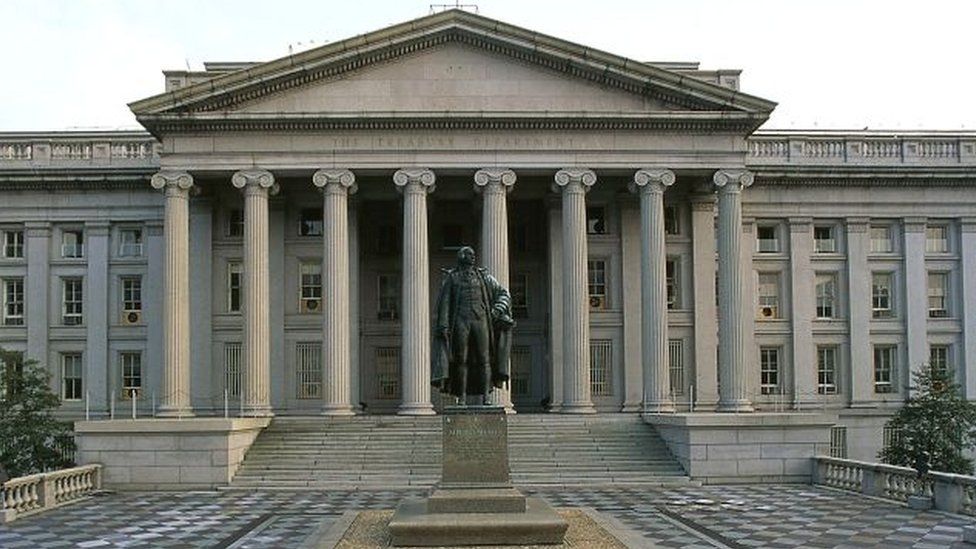Trump order: New federal buildings must be 'beautiful'
- Published

US President Donald Trump has issued an order that future federal buildings across the country must be "beautiful", and preferably built in a classical Greek, Roman, or similar style.
The executive order says too many federal buildings reflect "brutalist" designs of the last century.
It says new government buildings should look more like America's "beloved" landmarks such as the White House.
Although traditionalists will welcome the move, many others are unhappy.
The American Institute of Architects said it "unequivocally opposes" the initiative, while critics have called it "undemocratic" for the government to impose an official style on architects.
The order - titled "Promoting Beautiful Federal Civic Architecture" - creates a new council to advise the president on future federal buildings.
"New federal building designs should, like America's beloved landmark buildings, uplift and beautify public spaces, inspire the human spirit, ennoble the United States, command respect from the general public, and, as appropriate, respect the architectural heritage of a region," the order reads.
President Trump, a property developer, has only a few weeks left in office after losing November's election to Joe Biden.
His executive order says that federal buildings built in Washington DC in recent times have created "a discordant mixture of classical and modernist designs".
It said that with some exceptions, the government had "largely stopped building beautiful buildings".
The use of classical and other traditional architecture "should be encouraged instead of discouraged", it adds.
Paul Goldberger, a Pulitzer-prize winning architect said the government "mandating of an official style is not fully compatible with 21st-century liberal democracy".
A draft of the order was first made public in February, raising objections from the American Institute of Architects and the National Trust for Historic Preservation.
On Monday, the institute said that communities should have "the right and responsibility to decide for themselves what architectural design best fits their needs".
The head of the institute, Robert Ivy, said in a statement: "Though we are appalled with the administration's decision to move forward with the design mandate, we are happy the order isn't as far reaching as previously thought."
Some architecture experts argued that, by pushing for classical architecture and excluding modern styles, the government was suggesting that white history and culture was superior.
In February, Phineas Harper, former deputy director of the Architecture Association, said: "Regardless of history, classical aesthetics have become a dog whistle for a certain pocket of nationalists - a code for whiteness."
However a White House official told Bloomberg that polls on the issue had found that a vast majority of Americans preferred traditional designs.
The National Civic Art Society also welcomed the move, saying: "Americans have long understood that classical architecture is not only beautiful, it embodies the key values of our representative government."
It added that a majority of people it had polled preferred classical architecture, and that "the design of federal buildings should reflect the aesthetic and symbolic preferences of the people they are built to serve."
You might also like:
How other incumbents left the White House after losing
Related Topics
- Published3 August 2017
- Published10 September 2015